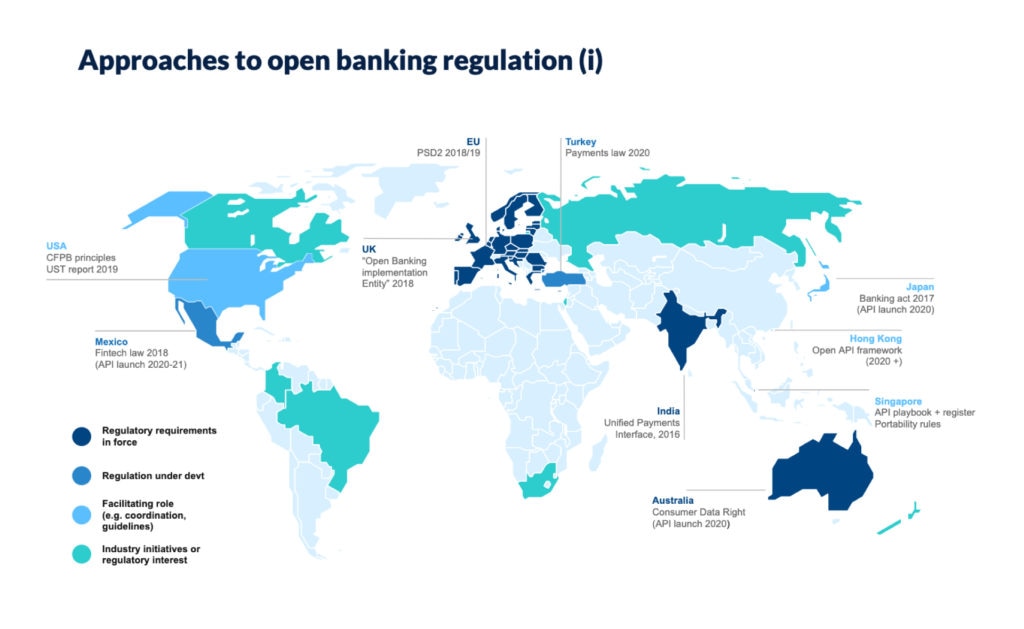
The Money Game: How Tax Policy Influences Investment Decisions
Have you ever wondered why some countries seem to boom with new businesses and innovations, while others struggle? Or why some people choose to save their money in certain ways over others? A huge, often invisible, player in these decisions is tax policy.
It might sound complicated, but understanding how tax policy works is like learning the rules of a very important game. These rules, set by governments, directly affect how much money businesses and individuals get to keep after earning it. And that, in turn, heavily influences where and how they choose to invest.
In this long-form guide, we’ll break down the fascinating connection between tax policy and investment decisions in a way that’s easy for anyone to understand. Get ready to see the world of money, business, and economic growth in a whole new light!
What Exactly Are We Talking About? A Quick Primer
Before we dive deep, let’s clarify two key terms:
- Tax Policy: This refers to the rules and regulations a government sets regarding how it collects money from individuals and businesses. It includes everything from income tax rates and sales taxes to special deductions, credits, and the way profits from investments are taxed.
- Investment Decisions: This is simply where and how people and companies decide to use their money (or capital) to generate future income or growth.
- For Businesses: This could mean building a new factory, buying new machinery, investing in research and development (R&D), hiring more staff, or expanding into new markets.
- For Individuals: This might involve putting money into stocks, bonds, real estate, starting a small business, or even just putting it into a savings account.
The core idea is simple: Taxes reduce the amount of money you get to keep from your earnings or profits. If you get to keep more, you might be more inclined to take risks, expand, or save for the future. If you keep less, you might think twice.
Key Tax Levers and Their Impact on Business Investment
Businesses are constantly weighing risk against reward. They want to make a profit. Tax policy directly impacts that profit, both now and in the future. Here are the main ways governments use taxes to influence what companies do:
1. Corporate Income Tax Rates
- What it is: This is the tax companies pay on their profits. Imagine a company makes $1 million in profit. If the corporate tax rate is 25%, they pay $250,000 in taxes and get to keep $750,000.
- How it influences investment:
- Lower Rates: When corporate tax rates are lower, companies get to keep a larger share of their profits. This means they have more money available to:
- Reinvest: Buy new equipment, expand operations, develop new products.
- Distribute to Shareholders: Pay dividends, which can attract more investors.
- Build Reserves: Have a cushion for future opportunities or downturns.
- Result: Lower rates generally encourage more business investment, as the potential "after-tax" profit is higher. It can also make a country more attractive for foreign companies to set up shop.
- Higher Rates: Conversely, higher corporate tax rates leave companies with less profit. This can:
- Discourage Expansion: Less money available for growth.
- Reduce Competitiveness: Companies might struggle to compete with those in lower-tax countries.
- Lead to Relocation: Some companies might even consider moving their operations to countries with more favorable tax environments.
- Result: Higher rates can deter business investment and potentially slow down economic growth.
- Lower Rates: When corporate tax rates are lower, companies get to keep a larger share of their profits. This means they have more money available to:
2. Depreciation Rules and Capital Allowances
- What it is: When a business buys a big asset (like a machine, building, or vehicle), it doesn’t usually count the whole cost as an expense in one year. Instead, it "depreciates" it over its useful life. This means it deducts a portion of the cost each year from its taxable income. Capital allowances are similar, allowing businesses to deduct certain capital expenditures.
- How it influences investment:
- Accelerated Depreciation (Faster Write-offs): If the government allows companies to deduct the cost of an asset more quickly (e.g., writing off 100% in the first year, known as "full expensing"), it means they pay less tax now.
- Benefit: This increases a company’s immediate cash flow, making it more attractive to buy new equipment or build facilities. It essentially lowers the effective cost of the investment.
- Result: Strongly encourages investment in physical assets and equipment. It’s a powerful tool to stimulate capital expenditure.
- Slower Depreciation: If companies have to deduct costs over many years, they don’t get the immediate tax benefit, which can make large capital investments less appealing.
- Accelerated Depreciation (Faster Write-offs): If the government allows companies to deduct the cost of an asset more quickly (e.g., writing off 100% in the first year, known as "full expensing"), it means they pay less tax now.
3. Tax Credits and Deductions
- What they are:
- Deductions: Reduce the amount of income that is subject to tax. For example, if a business spends money on employee training, that might be a deductible expense, lowering its taxable profit.
- Credits: Directly reduce the amount of tax a company owes, dollar for dollar. A $100 tax credit means $100 less in taxes, regardless of the tax rate.
- How they influence investment: Governments often use specific tax credits and deductions to incentivize particular types of investment they want to encourage.
- Research & Development (R&D) Credits: These are designed to encourage companies to innovate and develop new technologies. By making R&D cheaper (after tax), governments hope to foster innovation.
- Investment Tax Credits (ITCs): These might be offered for investing in specific industries (like renewable energy) or in certain economically depressed regions.
- Hiring Credits: To encourage job creation, governments might offer credits for hiring specific types of workers (e.g., long-term unemployed).
- Result: These are highly targeted tools that can direct investment towards specific sectors, activities, or regions that a government deems important for economic growth or social benefit.
4. Capital Gains Tax (for Businesses)
- What it is: This is a tax on the profit a business makes when it sells an asset that has increased in value (e.g., selling a subsidiary company, a piece of land, or a large investment).
- How it influences investment:
- Higher Capital Gains Tax: Can make businesses less willing to sell profitable assets, even if selling them would free up cash for new, potentially more productive investments. It can "lock in" capital.
- Lower Capital Gains Tax: Can encourage businesses to sell underperforming assets and reinvest the proceeds into more promising ventures, leading to more efficient allocation of capital.
- Result: Affects the liquidity and reallocation of business assets.
5. International Tax Rules
- What it is: These are complex rules governing how multinational companies are taxed across different countries. This includes things like how profits earned abroad are taxed when brought back home (repatriation), and rules to prevent companies from shifting profits to low-tax jurisdictions (transfer pricing).
- How it influences investment:
- Repatriation Rules: If a country heavily taxes profits earned abroad when they are brought back home, companies might prefer to keep that money overseas, investing it in other countries rather than bringing it back for domestic investment.
- Tax Havens: The existence of very low-tax jurisdictions can draw investment away from higher-tax countries, as companies seek to minimize their overall tax burden.
- Result: Heavily influences Foreign Direct Investment (FDI) – where multinational companies choose to build factories, conduct R&D, and create jobs around the world. Countries compete fiercely with their tax policies to attract FDI.
How Tax Policy Influences Individual Investment Decisions
It’s not just big corporations; individual investors are also very sensitive to how their savings and investments are taxed. Every dollar you earn, save, or invest is potentially subject to some form of tax.
1. Income Tax on Wages and Salaries
- What it is: The tax you pay on the money you earn from your job.
- How it influences investment: While not directly a tax on investment, your net (after-tax) income determines how much discretionary money you have left over to save and invest.
- Higher Income Tax: Leaves less money for savings and investment, potentially reducing the overall pool of capital available in the economy.
- Lower Income Tax: Leaves more disposable income, which can then be saved, invested in stocks, real estate, or used to start small businesses.
- Result: Impacts the ability and willingness of individuals to save and invest.
2. Capital Gains Tax (for Individuals)
- What it is: The tax on the profit you make when you sell an investment that has increased in value (e.g., stocks, mutual funds, real estate).
- How it influences investment:
- Higher Rates: Might make individuals less likely to sell appreciated assets (known as the "lock-in effect") to avoid paying the tax. This can reduce market liquidity. It also makes long-term investing less appealing if a large chunk of the future gain is taken by tax.
- Lower Rates: Can encourage more active trading and reallocation of investments, as the tax burden on profits is less severe. It might also encourage more risk-taking in growth-oriented investments.
- Result: Directly affects the attractiveness of growth investments and the willingness to sell and reallocate portfolios.
3. Dividend Tax
- What it is: A tax on the portion of a company’s earnings that it pays out to its shareholders.
- How it influences investment:
- Higher Dividend Tax: Can make dividend-paying stocks less attractive, as a significant portion of the income is taken by tax. Investors might prefer companies that reinvest their profits or those with a focus on stock price appreciation.
- Lower Dividend Tax: Can make dividend stocks more appealing, especially for income-focused investors.
- Result: Influences the attractiveness of income-generating investments (like certain stocks or funds).
4. Interest Income Tax
- What it is: The tax on interest earned from savings accounts, bonds, certificates of deposit (CDs), etc.
- How it influences investment:
- Higher Interest Income Tax: Reduces the after-tax return on relatively safe investments, potentially making them less attractive compared to riskier, but potentially higher-return, options.
- Lower Interest Income Tax: Makes saving and fixed-income investments more appealing.
- Result: Affects the attractiveness of low-risk, fixed-income investments.
5. Tax-Advantaged Accounts (e.g., 401(k)s, IRAs, ISAs)
- What they are: Special investment accounts created by governments to encourage saving for specific purposes, often retirement. They offer tax benefits, such as:
- Tax-Deductible Contributions: Money put in reduces your current taxable income.
- Tax-Deferred Growth: Investments grow without being taxed year-to-year. You only pay tax when you withdraw in retirement.
- Tax-Free Withdrawals: In some accounts (like Roth IRAs or ISAs), you pay tax on the contributions, but all qualified withdrawals in retirement are completely tax-free.
- How they influence investment:
- These accounts are incredibly powerful incentives. By offering significant tax breaks, governments make it much more appealing for individuals to save and invest for the long term.
- They reduce the immediate and future tax burden, dramatically increasing the "after-tax" return on investment.
- Result: Massively encourages long-term saving and investment, particularly for retirement, by reducing the effective cost of investing.
The Ripple Effect: Broader Economic Impacts
The influence of tax policy on investment decisions isn’t just about individual companies or people; it has massive consequences for the entire economy.
- Economic Growth: When companies invest more (new factories, R&D, technology), it leads to increased productivity, more goods and services, and ultimately, a stronger economy (measured by GDP). When individuals save and invest, that capital becomes available for businesses to borrow and grow.
- Job Creation: Business expansion directly translates into more jobs. When tax policies encourage investment, they indirectly foster employment.
- Innovation and Productivity: Tax credits for R&D can spur breakthroughs in technology and medicine, leading to new industries and more efficient ways of doing things, which benefits everyone.
- Global Competitiveness: Countries with attractive tax policies can draw in foreign investment and skilled labor, boosting their standing in the global economy. Conversely, unfavorable tax rules can lead to a "brain drain" and capital flight.
- Income Inequality: While tax policies aim to spur growth, their design can sometimes exacerbate or alleviate income inequality. For example, lower capital gains taxes might disproportionately benefit wealthier individuals who have more investment income.
Challenges and Trade-offs
Designing effective tax policy is incredibly complex. Governments face a constant balancing act:
- Revenue Needs vs. Incentives: Governments need tax revenue to fund public services (healthcare, education, infrastructure). Lowering taxes to encourage investment means less money for these services, at least in the short term.
- Complexity: Tax codes often become incredibly complex as governments try to target specific behaviors with various credits, deductions, and rules. This complexity can be a burden for businesses and individuals, sometimes even deterring investment due to uncertainty.
- Unintended Consequences: A policy designed to achieve one goal might have unforeseen negative effects elsewhere. For example, a generous tax break for a specific industry might distort the market and pull resources away from other productive sectors.
- Political Influence: Tax policy is often a hot-button political issue, subject to lobbying and ideological debates, which can make consistent, long-term planning difficult.
Conclusion: The Unseen Hand Guiding Our Economy
Tax policy is far more than just a way for governments to collect money. It’s a powerful and intricate tool that acts like an unseen hand, gently (or sometimes not so gently) guiding where and how money flows in an economy.
By understanding how corporate income taxes, depreciation rules, capital gains taxes, and individual savings incentives work, you can begin to see why companies make certain strategic decisions and why individuals choose specific investment paths.
In essence, governments use tax policy to create an environment that either fosters or hinders investment, ultimately shaping the economic landscape, job markets, and the overall prosperity of a nation. So, the next time you hear about a proposed tax change, remember: it’s not just about numbers; it’s about influencing the very pulse of economic growth and opportunity.



Post Comment